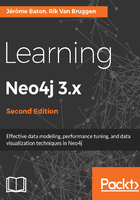
Key-value stores
Key-value stores are probably the simplest type of task-oriented NoSQL databases. The data model of the original task at hand was probably not very complicated: Key-value stores are mostly based on a whitepaper published by Amazon at the biennial ACM Symposium on Operating Systems Principles, called the Dynamo paper. The data model discussed in this paper is that of Amazon's shopping cart system, which was required to always be available and to support extreme loads. Therefore, the underlying data model of the Key-value store family of database management systems is indeed very simple: keys and values are aligned in an inherently schema-less data model. Indeed, scalability is typically extremely high, with clustered systems of thousands of commodity hardware machines existing at several high-end implementations such as Amazon and many others. Examples of Key-value stores include the mentioned DynamoDB, Riak, Project Voldemort, Redis, and the newer Aerospike. The following screenshot illustrates the difference in data models:
